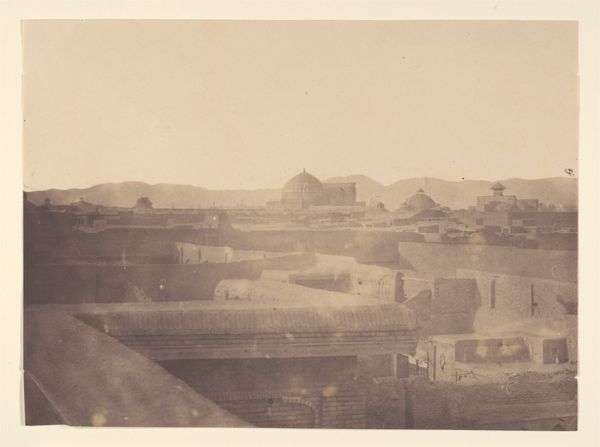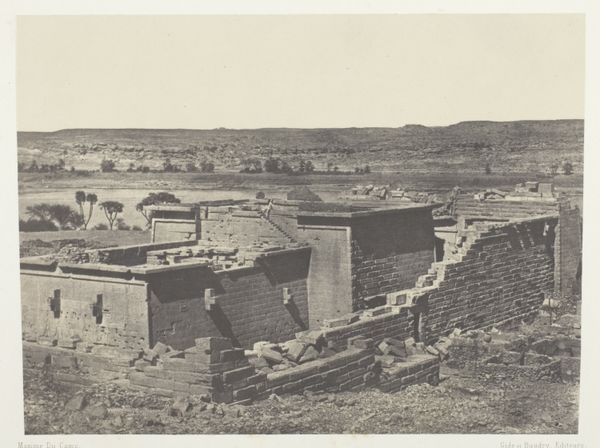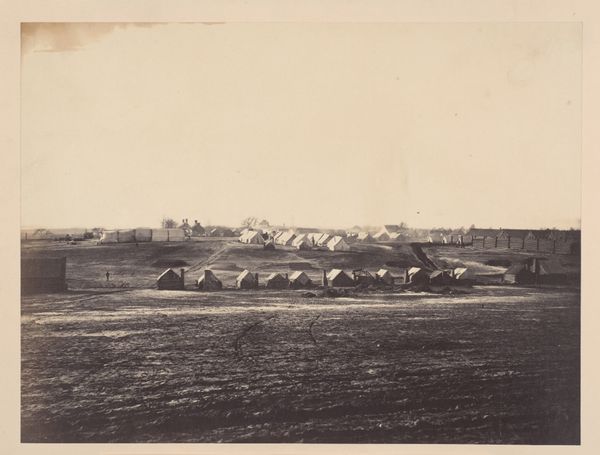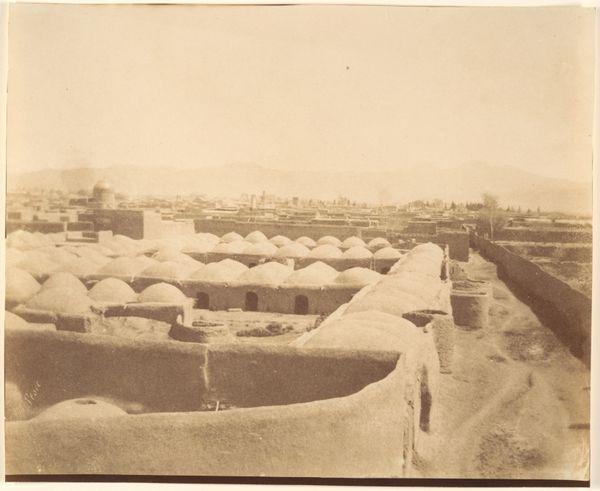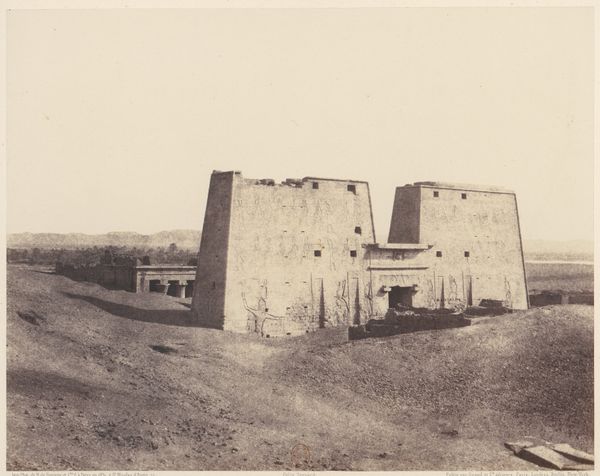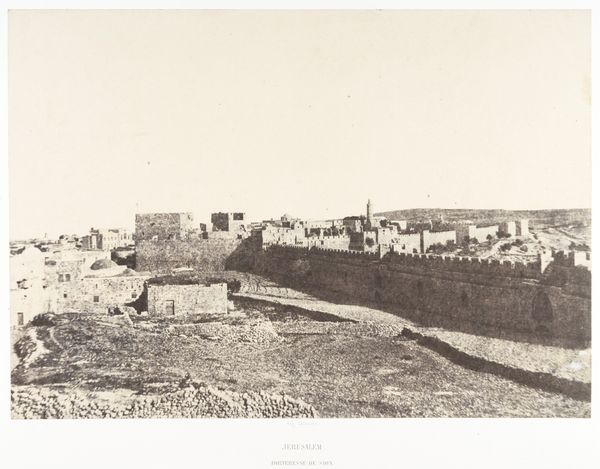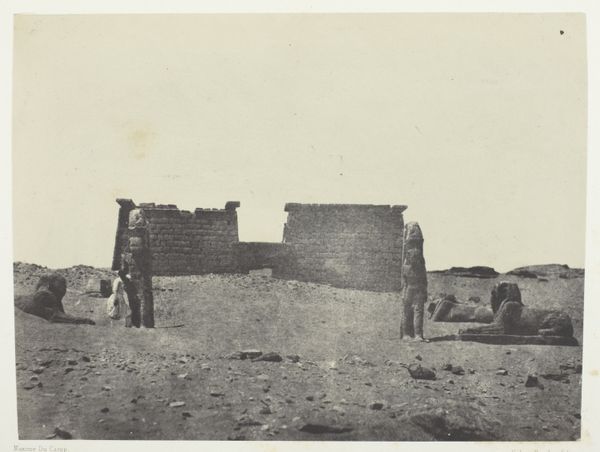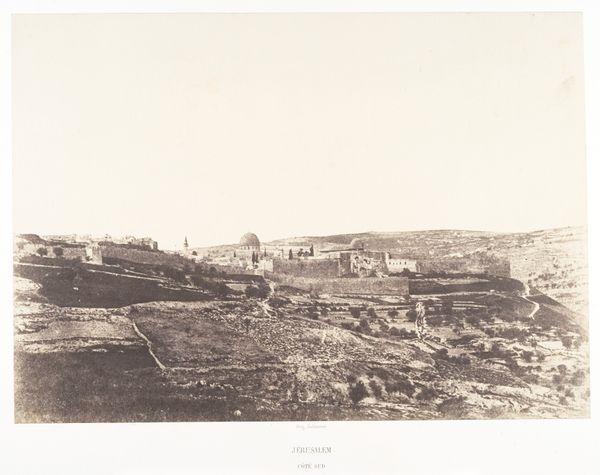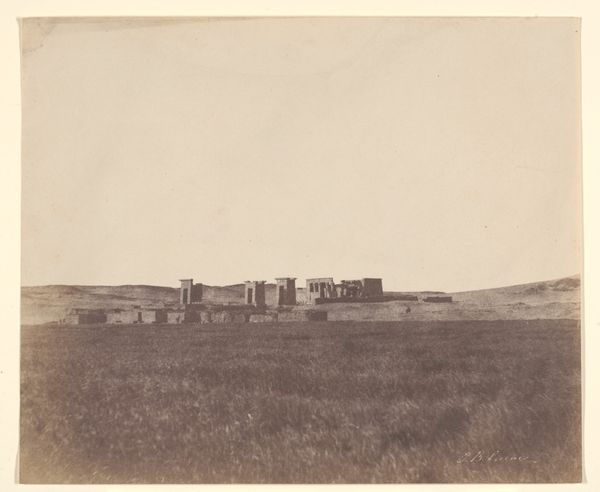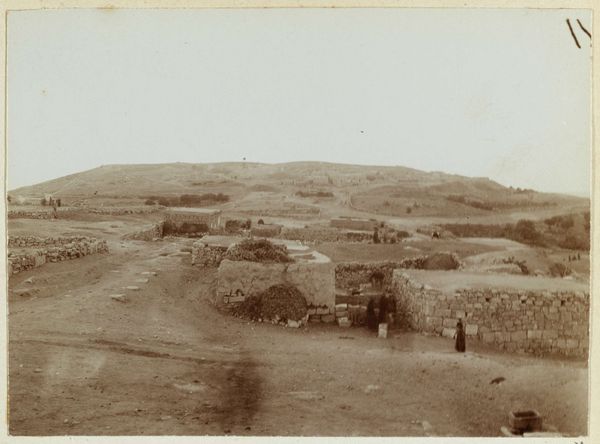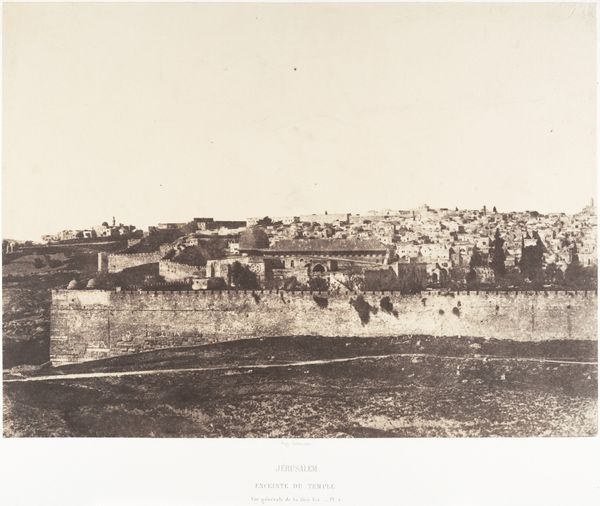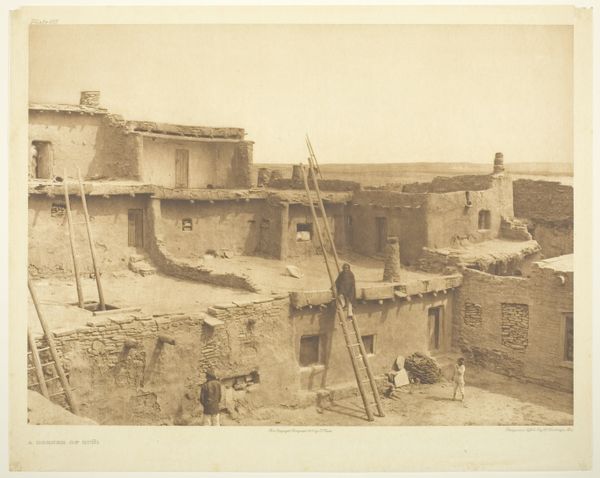![[A Persian Citadel in the Environs of Sultaniye] by Luigi Pesce](/_next/image?url=https%3A%2F%2Fd2w8kbdekdi1gv.cloudfront.net%2FeyJidWNrZXQiOiAiYXJ0ZXJhLWltYWdlcy1idWNrZXQiLCAia2V5IjogImFydHdvcmtzLzFkNGVmMTRlLTQ4ZTMtNDNmNi1iYzk5LTM1NzViOWVjNDBjYy8xZDRlZjE0ZS00OGUzLTQzZjYtYmM5OS0zNTc1YjllYzQwY2NfZnVsbC5qcGciLCAiZWRpdHMiOiB7InJlc2l6ZSI6IHsid2lkdGgiOiAxOTIwLCAiaGVpZ2h0IjogMTkyMCwgImZpdCI6ICJpbnNpZGUifX19&w=3840&q=75)
[A Persian Citadel in the Environs of Sultaniye] 1840 - 1869
0:00
0:00
daguerreotype, photography, architecture
#
landscape
#
daguerreotype
#
outdoor photograph
#
outdoor photo
#
photography
#
historical photography
#
arch
#
orientalism
#
islamic-art
#
architecture
Copyright: Public Domain
Editor: So this is "[A Persian Citadel in the Environs of Sultaniye]", a daguerreotype by Luigi Pesce, created sometime between 1840 and 1869. I’m struck by how desolate and almost…documentary it feels, like a record of a bygone era. What are your initial thoughts looking at it? Curator: This photograph serves as an important historical document, placing architecture within its cultural and political moment. What's fascinating is not just the depiction of the citadel itself, but how Pesce chooses to frame it. He presents the decaying architectural marvel from Persia during a period when Europeans, and particularly the British, were increasingly interested and involved in the region. Notice how the presence of those tents almost colonizes the frame, creating an encampment feel at the foot of the old citadel. Editor: I hadn’t thought about the tents that way. Does their placement signify something about Western influence or power? Curator: It certainly raises the question of what they represent. The very act of photographing a site like this was often intertwined with colonial ambitions and the desire to survey, categorize, and ultimately, control the East. Consider the rise of "Orientalism" in art and photography at this time—how did such imagery shape perceptions of Persia and its people in the West? Do you see anything that hints at a Western point of view? Editor: Well, the composition itself is quite formal. The way the citadel dominates the background suggests respect, but those tents do add a sense of…encroachment. Curator: Precisely. The photographic act becomes a form of appropriation. It suggests not only seeing but also possessing. Early photography played an interesting role in cultural narratives of dominance. Editor: I hadn’t considered photography as being so tied to power dynamics back then. It’s more than just a pretty picture. Thanks! Curator: Absolutely. This work demonstrates the subtle yet impactful ways in which images engage with broader social and political landscapes. Always ask who is behind the camera, and what are they trying to show – and hide?
Comments
No comments
Be the first to comment and join the conversation on the ultimate creative platform.
